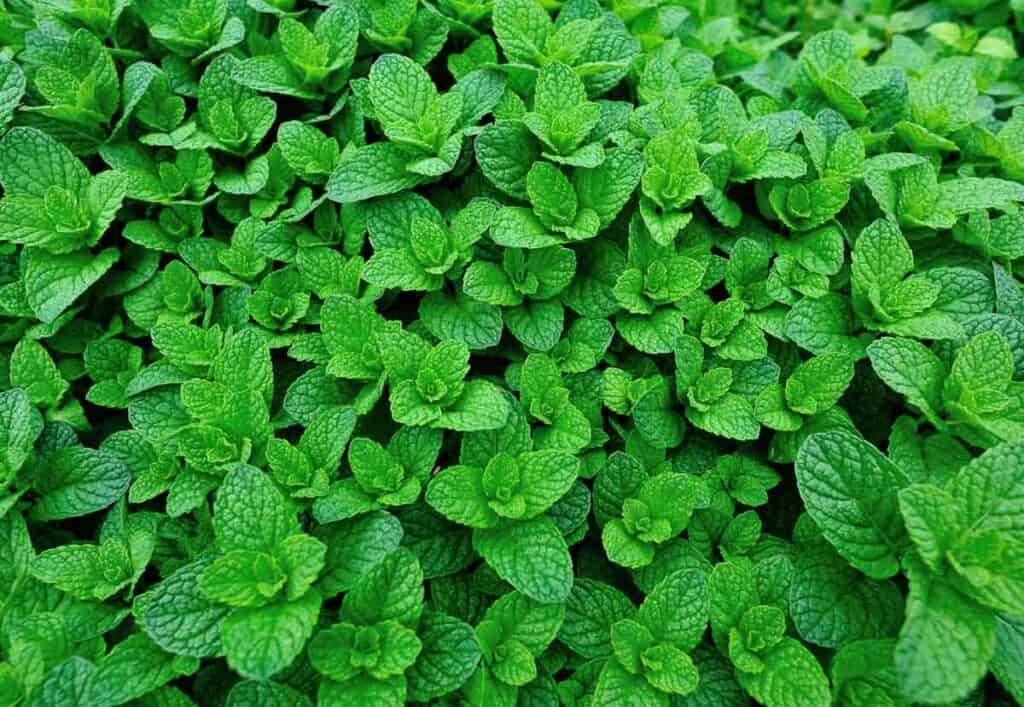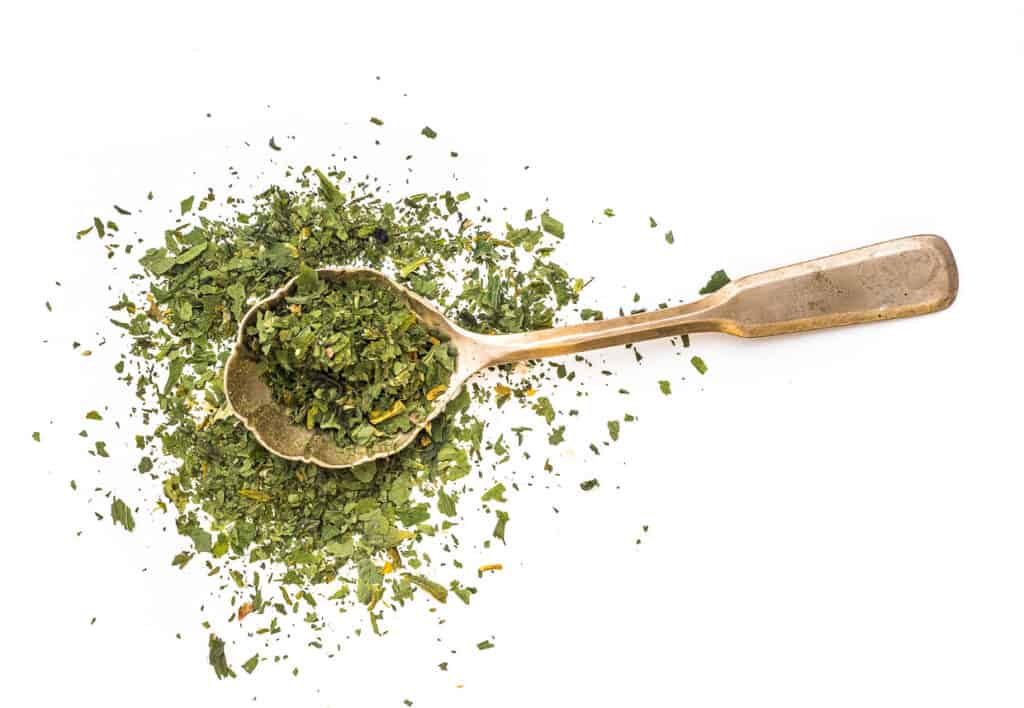There’s nothing quite like the refreshing, cool, crisp taste of fresh mint. With its clean, herbal notes, slight sweetness and subtle tanginess, mint is used in a variety of savory dishes, sweet dishes and beverages. This guide will provide all the information you need to prep, cook and store mint to preserve its freshness and flavor.

Selecting fresh mint
Fresh mint is harvested during the warmer months, from late spring through early autumn. It thrives from around May through September, during which time it is the most flavorful and aromatic.
Mint has a thicker stalk and thin, textured leaves with jagged edges. Only the leaves are edible, as the stalks have an unpleasantly fibrous texture. They can, however, be used to make things like mint tea or syrup.
If the option to grow herbs at home is not possible, you can purchase fresh mint at your local farmer’s market or grocery store.
To select the freshest mint, choose bunches with bright green leaves. Ensure that there are no black or brown spots and that the leaves are not wilted. Mint should have a strong, refreshing aroma.
If you are purchasing mint in a plastic container, check to see if there is any excess moisture in the container that may lead to mold. It is safe to eat mint after it has flowered. However, the flavor may be less robust.

The taste of mint
Mint has an herbal, crisp taste and a cool, clean scent. It can provide a soothing menthol sensation in your mouth when eaten.
There are two different popular types of mint: spearmint and peppermint. Spearmint is more often characterized by a refreshing taste. Peppermint is quite similar in taste but can also have grassy undertones.
FDL’S 75 Best Bites

Our cookbook with 75 tasty recipes will be your go-to kitchen companion for easy dinners with ad-free recipes right at your fingertips. Crafted by experienced chefs and recipe developers, this collection offers a treasure trove of tried-and-true dishes that make mealtime a breeze.
Get the Recipe: FDL’S 75 Best Bites
Cleaning mint
When cleaning mint purchased from the store, first remove any packaging such as rubber bands or twist ties. Inspect the mint for any brown, black or wilted leaves and remove them. Then rinse the mint leaves under cool running water, removing any visible dirt or debris. After the mint has been washed, remove any excess moisture from the bunch by patting it dry with paper towels or running it through a salad spinner.
Storage suggestions
Mint is a delicate herb, like basil or parsley, and must be treated with proper care to preserve its flavor and texture. There are several ways to store mint for later use.
The most popular option is to wrap the mint leaves in a damp paper towel and store them in a plastic bag in the refrigerator. You will want to leave the top of the bag open.
Another popular option is to trim the ends of the mint stems and place them in a glass partially filled with water like you would with a bouquet of flowers.
You can store the mint on the counter or in the refrigerator. If you are storing the mint in the refrigerator, it tends to last longer if you carefully cover the leaves with a loose plastic bag. Be sure to change the water when it gets cloudy.
The third option is to dry your fresh mint. You can use a food dehydrator for this, or you hang it upside down with a string in a cool, dry place until fully dried. This can take up to two weeks.
“Our garden is full of field mint, a tame mint that went wild 30 or 40 years ago. Instead of fighting it, I embrace it. I pick it before it blooms for the best flavor. I dry it in bundles in my pantry and then store the dry mint for tea all winter long.”
— Laura Sampson, Little House Big Alaska
Once your mint is fully dried, store it in an airtight container like a glass jar.
You can also freeze mint by removing the leaves from the stem, chopping them and adding them to ice cube trays. Cover the mint with water and freeze. These ice cubes can later be added to cucumber mint water or cocktails.
Culinary uses for fresh mint
While hardy herbs like thyme or rosemary can be added early on in the cooking process, mint should be added at the very end of the cooking time to maintain its delicate texture.
For savory dishes, fresh mint is an amazing addition to grain bowls, pasta, salads, wraps, spring rolls, flatbreads and sauces. Try it as a garnish with roasted or grilled meats, fish or vegetables.
Middle Eastern, Greek and Southeast Asian cuisines use mint heavily in savory preparations. In the United States, we more commonly use mint in drinks and desserts.
“I love the aromatic flavor that fresh mint adds to cold drinks. So, I started to grow mint to always have fresh mint leaves. I add them to my morning lemon water and iced tea. Iced green tea with a lemon slice and fresh mint leaves is my favorite summer drink. So refreshing.”
— Tamara, Thriving In Parenting
Mint is seen in all sorts of sweet dishes, like baked goods, ice cream and chocolate. It can also be added to your favorite cocktails, like mojitos.
“When my garden is overflowing with mint, I use it to make mint simple syrup and to garnish drinks. There are few drinks more refreshing than a cocktail made with fresh mint. Mint juleps and mojitos are so light and crushable in the summertime.”
— Susannah Brinkley Henry, Feast + West
To add mint to your dish or drink, remove the leaves from the stem. You can add them whole, muddle them in a mortar and pestle or finely slice or chop them.
Final thoughts
Mint is a refreshing, lively soft herb used across savory and sweet dishes as well as in drinks. It is loved for its clean, crisp scent and taste. While available year-round in grocery stores, it is most flavorful in late spring through early fall.
To select the best mint, choose bunches with bright green leaves that do not have brown or black spots and are not wilted. Ensure the packaging does not contain excessive moisture, or the mint may develop mold.
You can store mint in a damp paper towel in a plastic bag in the refrigerator, on the counter in a glass of water, dry it or freeze it.
Despite its strong aroma and flavor, mint should be added to the end of the cooking process to maintain its delicate texture.
Experiment with mint in savory and sweet dishes, from roast meats to ice cream, and be sure to use it in your beverages and cocktails for a dash of bright, bold flavor. You are sure to discover a world of culinary possibilities for this delicious and versatile fresh herb.
Gen La Rocca is a professional chef, writer and editor living in Southern California. She is the owner and recipe creator behind Two Cloves Kitchen, a food site featuring contemporary, California-inspired recipes. She has edited over 20 novels, short stories and essays for publication.


